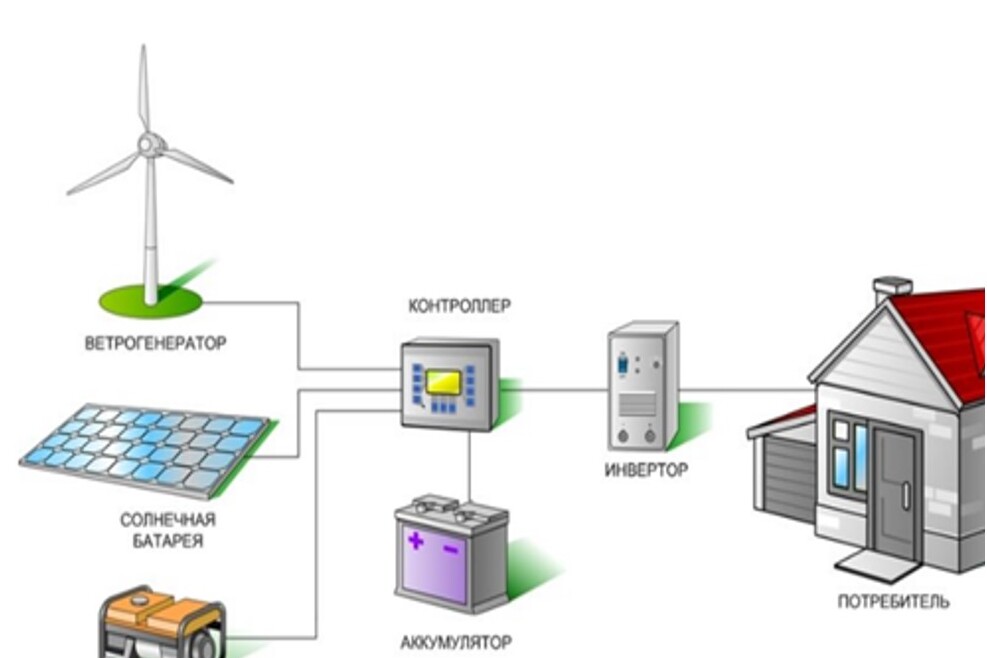
Most often, wind farms are used to supply power to autonomous buildings where there is no connection to the city power grid.
A wind generator in an autonomous system is extremely useful. For the most part, the fact that its production does not have a pronounced dependence on the seasons. It first converts the kinetic energy of the wind into mechanical energy of the rotor and then into electrical energy. The power of the wind generator can vary from 5 kW to 4500 kW. Modern devices generate energy even from very weak winds - from 4 m/s. Wind turbines can be part of a private independent power plant and allow you to sell excess energy to the state under the terms of the "green tariff". Such structures can be a source of energy for local and island facilities, as they solve problems of energy supply autonomously.
Wind flows rotate the blades of the wind generator: they pass through the turbine, put it into action, and it starts to rotate. The energy generated on the turbine shaft is proportional to the wind flow. The stronger the wind, the more energy. Further, the energy is transferred along the rotor shaft to the multiplier (if any), which generates it.
Now, wind turbines with a horizontal axis of rotation (vane) are widely used, since their wind energy utilization factor (WEUF) easily reaches 30% or more, and for wind turbines with a vertical axis of rotation WEUFis about 20%.
A home power system using a wind turbine is similar to a system with solar modules. Both wind generators and solar modules can be used in one system.
The amount of energy generated depends on the height of the mast and the diameter of the rotor: for every 10 meters of windmill lift, 1 m/s of wind speed is added. The higher the mast, the more likely it is that the device will operate at maximum efficiency. The situation is the same with the rotor: the larger the diameter, the more efficient the power generation.